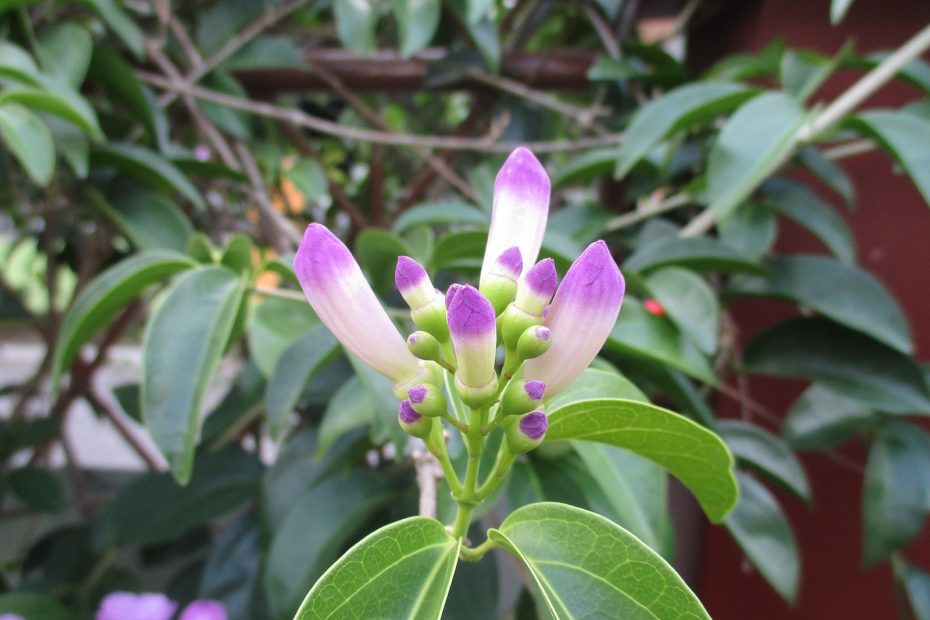Video: What is garlic vine aka Mansoa alliacea?
(Directly playing the video will automatically display subtitles in your language. If the subtitles are not in your language, you can go to Youtube to use the subtitle function.
If you like my content, you can also subscribe for more.
When you think of garlic, the first image that likely comes to mind is that of the familiar bulbous plant used as a staple in various cuisines. But have you ever heard of the garlic vine, also known as Mansoa alliacea? This is a completely different plant, yet it shares an aromatic resemblance to garlic. Let’s delve into the fascinating world of the garlic vine.
What is Garlic Vine (Mansoa alliacea)?
Garlic vine is a semi-woody climbing vine that hails from the tropical regions of Northern South America. Its name ‘Mansoa alliacea’ is a botanical nod to its unique characteristics. Part of its allure is the stunning trumpet-shaped flowers which range in color from lavender to deep purple, often within the same bloom. These flowers are not just a treat for the eyes; they exude a powerful garlic scent, especially when crushed.
Unique Features of Garlic Vine
- Aromatic Leaves: The garlic vine’s leaves, when crushed, give off a strong garlic aroma, which is reminiscent of the culinary garlic we’re familiar with. This is particularly intriguing since the two plants are not directly related.
- Flowering Pattern: The vine’s flowers undergo a color change as they mature. They usually start as a bright white or pale lavender and deepen to a rich purple as they age. This creates a mesmerizing ombre effect on the vine when in full bloom.
- Growth Habits: Being a vigorous climber, the garlic vine can grow up to 2.5 meters in a year under optimal conditions. This makes it a popular choice among gardeners who want to cover walls, fences, or trellises in a relatively short period.
Uses and Benefits of Garlic Vine
While the garlic vine, Mansoa alliacea, has been traditionally used for various medicinal purposes and is often celebrated for its purported health benefits, it is essential for readers to understand that scientific research on the plant remains limited. Many of the claims related to its health benefits are based on anecdotal evidence and traditional uses, rather than rigorous scientific studies. Before considering the garlic vine for any therapeutic use, it’s crucial to consult with a healthcare professional. Additionally, always exercise caution when introducing any new plant or remedy into your routine. Different individuals may have varied reactions, and what works for one person might not necessarily be effective or safe for another. Remember, the world of herbal and traditional medicine is vast, and while it holds promise, it’s always best to approach it with an informed and cautious perspective.
- Medicinal Properties: Indigenous communities in South America have long revered the garlic vine for its purported medicinal properties. The plant has been used traditionally to treat ailments like colds, inflammation, and rheumatism.
- Ornamental Use: Due to its vivid blooms and growth pattern, the garlic vine serves as an attractive ornamental plant. Gardeners and horticulturists value it for the vibrancy it brings to gardens and landscapes.
- Natural Repellant: Given its strong garlic scent, the plant can act as a natural insect repellent, deterring pests from the garden.
How to plant garlic vine(mansoa alliacea)?
- Light Requirements: Garlic vine thrives in full sun to partial shade. If you’re growing it in a region with intense sunlight, providing it with some afternoon shade can be beneficial.
- Soil Needs: It prefers well-draining soil. While it can tolerate a variety of soil types, ensuring good drainage is crucial to prevent root rot.
- Watering: The plant prefers regular watering, especially during its growth phase. However, once established, it shows a good degree of drought resistance.
- Pruning: To maintain its shape and promote denser growth, it’s a good idea to prune the garlic vine after it has finished flowering.
In conclusion, the garlic vine or Mansoa alliacea is a captivating blend of beauty and utility. Whether you’re drawn to its striking blooms, intrigued by its aromatic qualities, or interested in its traditional medicinal uses, there’s no denying that the garlic vine is a noteworthy addition to the botanical world. So the next time you come across this plant, take a moment to appreciate its multifaceted charm.
